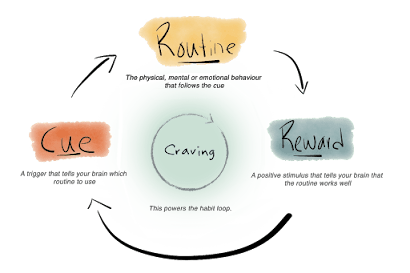The Power of Habit: Why We Do What We Do in Life and Business by Charles Duhigg, is a beautifully written book about how habits the ability to control our lives. Through the examples of real-life stories, sports teams and companies we see how habits help form the basis for many subconscious actions that people do. Duhigg said that approximately 40 percent of the actions people performed each day were not actual decisions, but habits. I thoroughly enjoyed this book as it was broken up into three sections that focused on different aspects. The first section focuses on how habits emerge within individual lives. The second looked at successful companies and organizations and their habits. The third part concentrated on the habits in societies. This allowed for the broad understand of how habits can affect in each level of society.
I would recommend this book to anyone who is looking to identifying habits and understanding how to change or stop them. Through this book I was able to learn important information about habits that I feel as though I should now share with fellow readers out there. These lessons will further your understanding upon habits and teach you effective ways to rid yourself of unwanted ones.
The first lessons learned was on how habits operate. Habits can be broken down into a three-step process: the habit is triggered by a cue, that produces a routine, which ultimately results in a reward. Cues usually fall into one of five categories: location, time emotions, others, or last action. Knowing which cue falls into which categories becomes useful when wanting to change your habits.
After reading The Power of Habit: Why We Do What We Do in Life and Business, I had the motivation to dive in a really tackle the habits I know are undesirable for me. I highly recommend this book to anyone looking to finally rid themselves of bad habits and start making a more successful productive lifestyle for themselves.


No comments:
Post a Comment